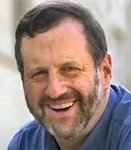
For the past few weeks, in response to a reader’s request, I’ve offered advice to new radio program directors.
This week, without being asked, I offer an odd piece of advice to PDs who’ve been programming for more than a couple of years:
Read Weird Books
A good radio program director already reads industry trade publications (online and off).
Make it a point always to be reading, in addition, at least one non-radio, non-business book.
No, I am not referring to books about your hobbies (e.g., fishing) or your passions (e.g., your religion).
My bookshelf contains lots of books about radio, marketing and advertising. Those don’t count.
Also lots of books about my extra-curricular interests: psychology, stage magic, and blackjack. (A long time ago I was a serious — and winning — blackjack player. For the three or four players reading this, I’ve got collector’s editions of Thorpe, Wong, Revere, Humble, Andersen, Braun….)
(Side note: Many years ago I ordered what since has become “the” classic blackjack book by “the” big blackjack name. It arrived in the mail with a note from the author: “Are you the Dan O’Day I used to listen to on the radio in San Francisco?” Made my day.)
None of those “hobby” books counts.
Neither do the books by my favorite novelists.
So what books “count”?
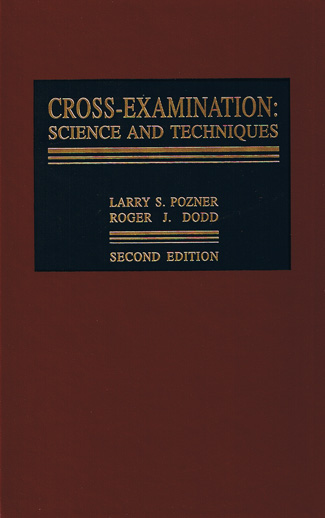 CROSS-EXAMINATION: SCIENCE AND TECHNIQUES by Larry S. Pozner and Roger J. Dodd. 761 pages, for trial lawyers. I bought it new for $95.
CROSS-EXAMINATION: SCIENCE AND TECHNIQUES by Larry S. Pozner and Roger J. Dodd. 761 pages, for trial lawyers. I bought it new for $95.
Didn’t get around to reading it for a few years.
Ended up creating an entire commercial copywriting seminar around the book’s techniques.
Wait!
Back up.
When I bought the book, I had no idea I’d ever use it “professionally.” Something about it simply caught my interest.
Ended up being a very cool seminar.
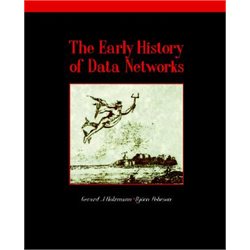 Another weird book: THE EARLY HISTORY OF DATA NETWORKS by Gerard Holzmann and Bjorn Pehrson.
Another weird book: THE EARLY HISTORY OF DATA NETWORKS by Gerard Holzmann and Bjorn Pehrson.
Flipping through an in-flight magazine while en route to a seminar somewhere, I came across a fascinating article about an optical “data network” — mirrors reflecting signals from station to station to station across hundreds of miles — that existed in Europe a few hundred years ago.
Amazed at what I read, I subsequently bought this book by the article’s authors.
At the turn of the 18th Century, well before the electromagnetic telegraph was invented, many countries in Europe already had fully operational data communications systems, with close to one thousand network stations.
This book documents the many attempts throughout history to develop effective means for long distance communications. (The oldest recorded attempts date back a couple of thousand years and include ingenious uses of homing pigeons, mirrors, flags, torches, and beacons.)
Haven’t figure out how to use this information yet, but my mind is richer for having read the book.
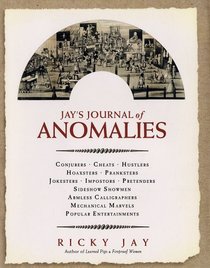
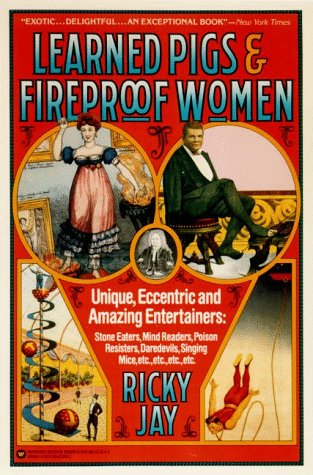 If you’ve been looking for an incredible, mind-blowing promotion that will set your market on fire, invest in JAY’S JOURNAL OF ANOMALIES or LEARNED PIGS & FIREPROOF WOMEN, both by Ricky Jay.
If you’ve been looking for an incredible, mind-blowing promotion that will set your market on fire, invest in JAY’S JOURNAL OF ANOMALIES or LEARNED PIGS & FIREPROOF WOMEN, both by Ricky Jay.
You won’t find any radio promotions in either book. But you’ll be inspired by the lengths to which people throughout history have gone to entertain or influence others.
(I personally can’t count those two books as “weird,” because Ricky Jay is a card magician. So they fit among my magic books.)
Why should you read weird books?
Because when you expand your areas of knowledge and interest, you add to your creative toolbox.
One way to insure your success as a radio programmer is to have access to as rich and varied a toolbox as possible.
The opening line of a radio commercial is the commercial for the commercial.
Unfortunately, that’s a concept the people who create Albertsons’ radio advertising don’t understand…
Ostensibly, this radio ad is aimed at shoppers who would appreciate more thorough nutritional labeling on grocery products.
But you wouldn’t know that from the opening line:
“With over 40,000 food items at Albertsons” — That’s it, game over. They’ve declared that this spot is about how many food items there are at Albertsons.
They just couldn’t resist boasting about how many products they stock — even though the number of items they stock is irrelevant to the “enhanced nutritional labeling” message.
Fact: The average customer doesn’t evaluate 40,000 food items during a typical trip to the supermarket.
Fact: The “40,000” figure is meaningless without being placed in a context that enables the listener to conceptualize it.
Fact: The misplaced bragging has no value even as a boast, because if you’re not in the supermarket business you have no idea if 40,000 food items is more, less or about the same as the number of food items carried by most large supermarkets. To the consumer, that number is meaningless.
And the “40,000” figure truly is meaningless to this commercial’s supposed message because that is not the number of food items that Albertsons includes in its “Nutrition IQ” program. That number is much smaller than 40,000.
Halfway into the commercial they say, “It’s like shopping with your own personal nutritionist.” Oh! You mean this radio ad is not about Albertsons’ 40,000 items? Too bad the targeted listeners already have stopped listening.
Oh, and thanks for telling us that fresh fruits and vegetables have lots of vitamins and minerals. Golly, we had no idea! We thought fresh fruits and vegetables are bad for our health.
And then there’s that God-awul, inane music bed. Did adding that music to the announcer’s voice increase the effectiveness of the sales message in any way?
If you missed Saturday’s teleseminar with Harlan Hogan and me, we’re making the replay available for the next few days.
Phone Number: 1-760-569-7699
Access Code: 6 7 6 1 4 1
Although our devious agenda was to promote our upcoming Starting Your Voiceover Business class, the 2-hour+ call was not an infomercial.
We fielded and & all questions related to the voiceover business.
And as usual, some of our answers were quite blunt.
Hope you enjoy the replay.


